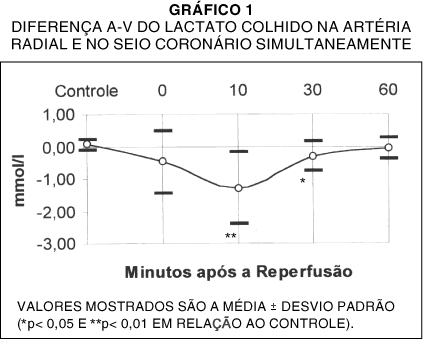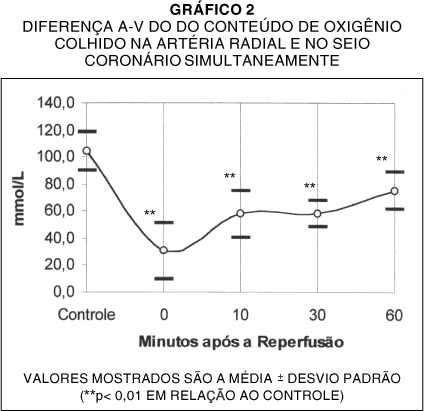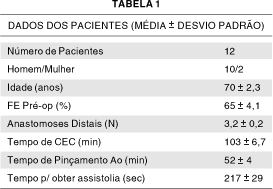MATERIAL AND METHODS: An metabolic analyse of hypothermic retrograde continuous blood cardioplegia was done in a prospective study of 15 patients scheduled for elective CABG. Inclusions criteria were double or triple vessel coronary artery disease and preserved left ventricular function (ejection fraction > 40%). Exclusions criteria were unstable angina, insulin-treated diabetes mellitus and associated peroperative procedures. Three patients were excluded of the study (associated procedure and coronary sinus catether dislocation). Arterial and coronary sinus blood samples were simultaneouslly taken: before ECC (extracorporeal circulation), when the aortic clamp was takem off and 10, 30 and 60 minutes after reperfusion for analysing of oxygen content and lactate concentration. Four transmural left ventricular biopsies samples were obtained: before aortic clamping, immediately after the inicial cardioplegia bolus, immediately before aortic declamping and 30 minutes after reperfusion for analysing of the levels of ATP, ADP, AMP and lactate in the myocardial. The CK-MB isoenzyme was analysed in venous blood samples. RESULTS: There was no mortality in the group. There was a decrease in the arterial-venous extraction of oxygen and lactate in the heart during reperfusion, occurring a parcial recuperation only at 60 minutes of reperfusion. The ATP and the others nucleotides had their levels in the myocardium maintened during aortic clamping, but these levels decreased during the first 30 minutes of reperfusion. The lactate was accumulated in the heart muscle during aortic clamping and his levels also decreased during reperfusion. The CK-MB levels were elevated specially between the third and sixth post-operative hour. CONCLUSIONS: In the metabolic point of view the method could not avoid an anaerobic metabolism during cross-clamping and only after 60 minutes of reperfusion there was a parcial metabolic recuperation. These alterations were probably a reflexion of cellular ischemic injury occurred during cross-clamping and they were of transitory effect.
Myocardium; Heart arrest induced; Hypothermia induced; Myocardium; Myocardium reperfusion; Heart physiology; Myocardial revascularization







